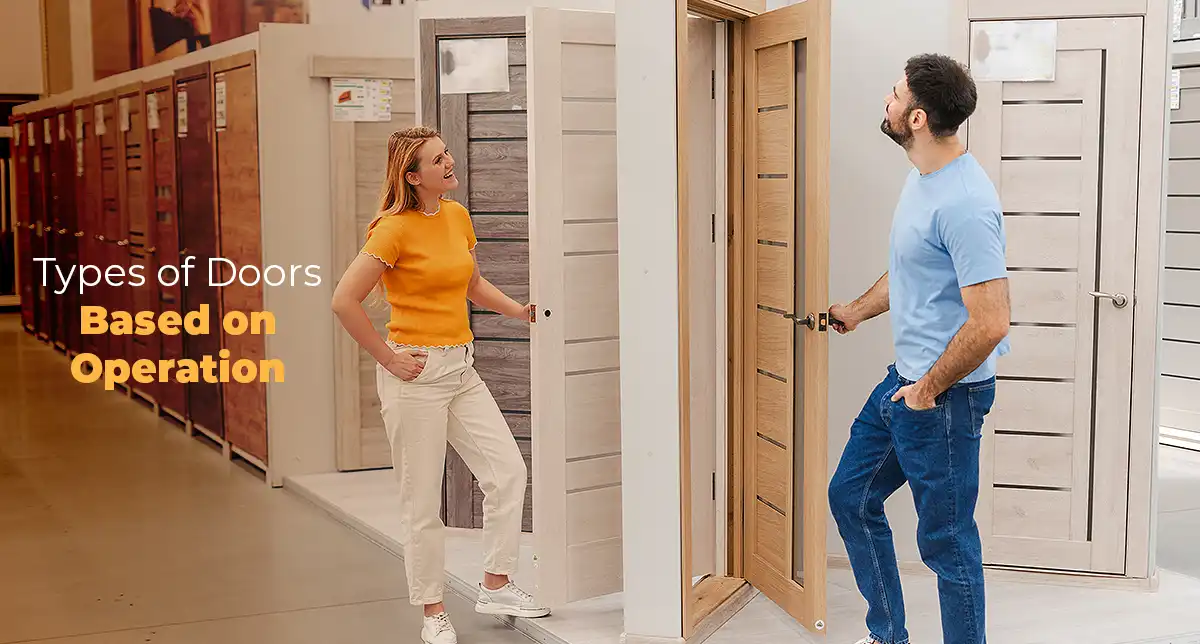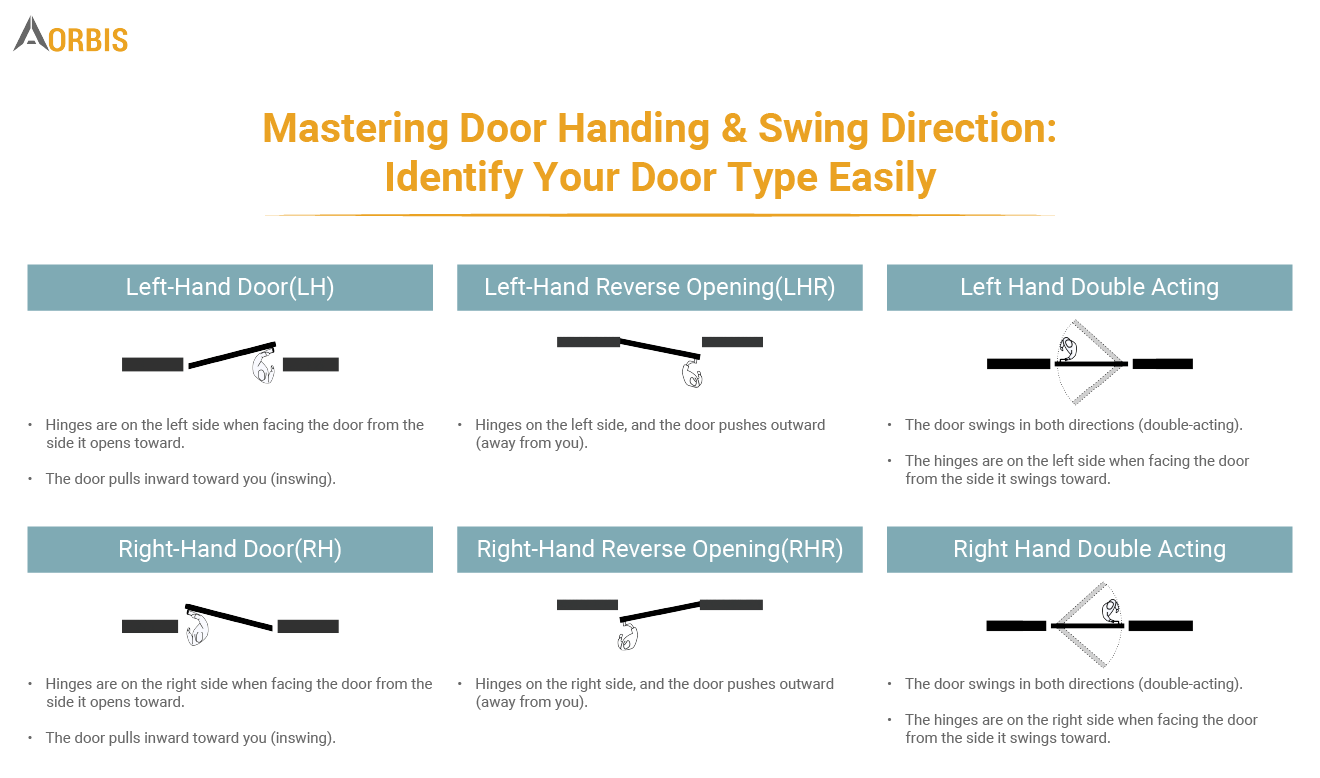If you’re a contractor, architect, or builder, understanding the different types of doors and their mechanics is key to making the best choices for your projects and clients.
In this blog, we’ll explore various door types based on how they operate: hinged, swing, sliding, rolling shutter, and revolving doors. Each type comes with its own set of advantages, making some better suited for certain situations. For instance, traditional hinged doors are straightforward and versatile, while revolving doors excel in high-traffic areas, keeping things moving smoothly.
As you go through this blog, you’ll discover design features, installation tips, and maintenance advice for each door type. This knowledge will empower you to select the right doors for any environment—be it commercial or residential projects—ensuring your projects not only meet but exceed client expectations. Let’s jump into the fascinating world of doors and see how they can enhance spaces, improve usability, and elevate architectural experiences.
Types of Doors Based on Operation Used in Building Construction
1. Hinged Doors
Hinged doors are the kind you probably picture when you think of a classic door. Made from solid wood or lightweight materials, they’re attached to a frame (known as the door jamb) with two or more hinges. If you’re dealing with taller or heavier doors, you might need to add some extra or sturdier hinges for extra support.
These doors are incredibly versatile, fitting a range of needs from front and back doors to interior and closet doors. They’re usually straightforward to install and budget-friendly, though prices can vary based on style and materials.
Hinged doors swing open along a vertical axis, making them easy to use. They do need a bit of space to swing, but overall, they’re low-maintenance and an economical choice for many different settings.
2. Swing Doors
Swing doors are designed to open easily in both directions. They have a frame with special springs that let the door swing open with just a gentle push or pull. Once you let go, the springs pull the door back to the closed position, much like regular hinged doors, but with the added benefit of moving both ways.
For safety, it’s a good idea to include glass panels or peepholes at eye level. This way, you can see if someone is coming from the other side, helping to avoid accidents. Swinging doors use double-action spring hinges, which keep the door closed when it’s not in use but allow it to door swing open freely. They can even pivot from the top for added flexibility.
You’ll often find swing doors in public spaces like offices and banks because they’re user-friendly and close automatically without needing power. They also help maintain a comfortable temperature and reduce noise, all while being sturdy enough to withstand the elements.
However, there are some things to consider. If a swing door opens inward, it could pose safety hazards, especially in busy areas. It’s important to ensure there’s enough space around the door so it can swing open smoothly without bumping into anything.
3. Sliding Doors
Sliding doors, often called bypass doors, open by moving sideways instead of swinging open. They run on tracks and guide rails, making them a great choice for spaces where every inch counts. You’ll frequently find them in commercial settings where both functionality and style are important.
These doors slide along a track, with trolley hangers at the top and rollers at the bottom to ensure smooth movement. Some exterior sliding doors even come with sensors for automatic opening and closing, adding an extra touch of convenience.
While sliding doors are easy to clean and save space, they do have a few downsides. They don’t do a great job of blocking sound, and if they’re not installed properly, they can get misaligned. The tracks can collect dust, and since they usually only open halfway, it can be tricky to create a tight seal against weather or noise.
There are various types of sliding doors, including bypass doors, surface sliding doors, and pocket doors. This versatility makes them suitable for different settings, like shops, sheds, garages, and offices where wider openings are beneficial.
4. Rolling Shutter Doors
Rolling shutter doors are commonly seen in warehouses, garages, shops, and storefronts. These robust doors consist of a frame, a drum, and a shutter made of interlocked steel slabs, called laths or slats, which are about 1.25 cm thick. The shutter rolls up around a pipe shaft (the “drum”) at the top of the opening.
To use the door, you simply raise it to open and lower it to close. For larger doors (over 10 square meters), you can add a motor for automatic operation, which makes it much easier to handle.
Rolling steel shutter doors provide excellent protection against theft, fire, wind, and hail, acting like a security curtain. They help keep your space safe and private while also shielding it from harsh weather. However, it’s essential to maintain them properly since they can rust over time, depending on the materials used.
5. Revolving Doors
Revolving doors feature a central shaft with four or more panels that rotate around it. This design allows people to enter and exit at the same time without bumping into each other. They move smoothly thanks to a ball-bearing system at the bottom.
The panels can be fully solid, entirely glass, or a mix of both, making it easier for people to see each other as they pass through. To enhance comfort, vertical rubber strips are added where the panels meet to block any drafts.
Revolving doors are particularly useful in busy public places like banks, libraries, and museums, where foot traffic is high. They help maintain a stable indoor climate by minimizing the amount of outside air that comes in.
However, while they look great and work well for handling crowds, revolving doors can sometimes feel a bit narrow and require some effort to push. It can also get a little tricky if two people try to enter at the same time.
Bringing It All Together
In conclusion, having a good grasp of the different types of doors and how they operate is essential for contractors, architects, and anyone involved in design and construction. By understanding each door’s functionality, you can make informed choices that enhance how a space works, feels secure, and serves its users.
At AORBIS, we get how crucial it is to select the right door for every project. As a leading door supplier in the USA, we offer a diverse range of high-quality doors tailored to meet the unique needs of contractors and architects. Our doors are not only functional and durable but also visually appealing, ensuring your projects truly stand out.
Whether you’re working on a new project, renovating an existing space, or searching for creative solutions for your clients, AORBIS, the best division 8 supplier is here to support you every step of the way. Explore our extensive types of exterior and interior doors collection and discover how we can help you create stunning spaces with doors that fit perfectly. For your next project, choose AORBIS—where quality and innovative door solutions come together to meet your needs.




